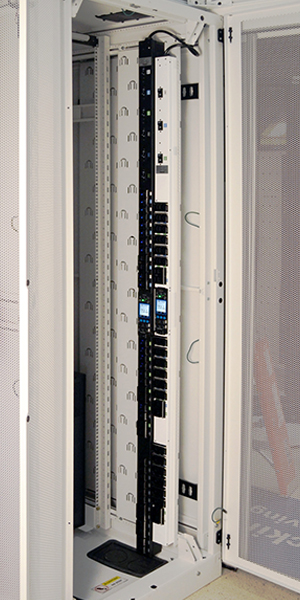Don’t Wait for Equipment Failure. Catch it Before it Strikes Through Proactive Environmental Monitoring.
October 14, 2021
It’s a fact that one of the most common causes of downtime is hardware failure. And often times, these failures are caused by exceeded temperature or humidity levels within the cabinet.
It’s also an industry best practice (recommended by the American Society of Heating, Refrigerating and Air Conditioning Engineers, or ASHRAE) that data centers maintain the appropriate temperature levels within the white space. This has a strong correlation to the overall energy consumption within the data center.
At a closer look, ASHRAE 2015 Thermal Guidelines state: IT equipment of all classes should be maintained within a temperature range of 64.4–80.6°F (18 – 27°C) and relative humidity within the range of 40 – 60%. Also, the difference between inlet and outlet temperature should be within 35°F (20°C) and should not change more than 9°F (5°C) in any 15-minute period.
So, how does a data center manage both a need to ensure equipment performance and also align with best practice within the white space? First, it’s important to measure and track inlet and outlet temperature, and inlet humidity at each rack or cabinet to ensure conditions are within ASHRAE recommended limits. To do so, consider placing a temperature and humidity probe near the top front and rear of each cabinet.
 To further optimize environmental monitoring in your cabinet ecosystem, consider the following when selecting an environmental monitoring solution:
To further optimize environmental monitoring in your cabinet ecosystem, consider the following when selecting an environmental monitoring solution:
- Remote temperature and humidity monitoring: Both inlet and outlet temperature and inlet humidity need to be monitored to ensure conditions are within ASHRAE recommended ranges, equipment specifications or your site requirements.
- Integration with a power distribution unit (PDU): So temperature and humidity data can be collected through the PDU network connection and interface.
- Upper and lower thresholds and data logging: The ability to set an upper and lower threshold for temperature and humidity that prompts an automated alarm to technicians if conditions approach a limit is essential. This also allows you to define parameters for your site based on operating conditions, and will log any out of bounds conditions for record keeping and analysis.
- Integration with Data Center Infrastructure Management (DCIM) software: The ability to trend and plot temperature and humidity conditions can help visualize patterns and identify the root cause of out of bounds conditions. This helps operators recognize the need to move a workload or a piece of equipment to another rack or indicates that airflow management is deficient in a particular rack.
To learn even more about remotely optimizing your data center efficiency and how to ensure the performance of your equipment, read this white paper.
Posted by Brittany Mangan, Social Media and PR Specialist at 10/14/2021 9:33:48 AM